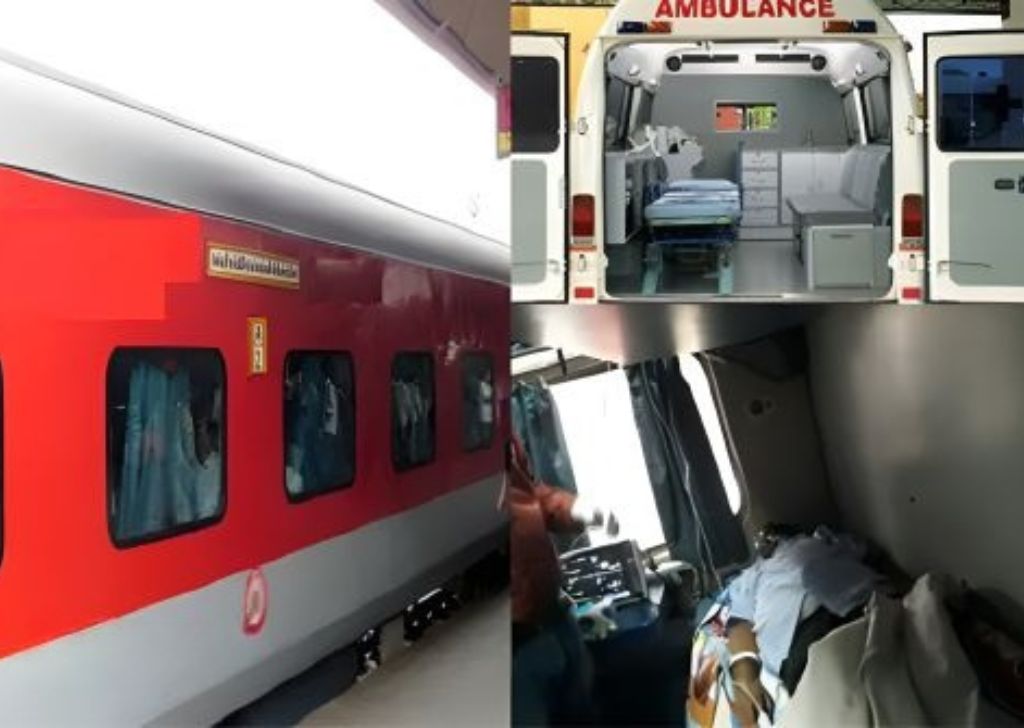What is a Train Ambulance? Understanding Its Purpose and Benefits

Introduction:
In India’s vast and diverse landscape where timely medical intervention can be a challenge due to geographical and infrastructure constraints, the concept of train ambulances revealed as a beacon of hope. Train Ambulance is a specialist medical transport service that utilizes the nation’s extensive rail network to provide essential care during long distance transfers This article explores what a train ambulance is, its purpose and its benefits, especially in the Indian market where such projects are on the rise it is needed. Keep on reading to know about the same in detail!
Understanding Train Ambulance: The Basics
A train ambulance is essentially a moving hospital on rails. It is equipped with medical facilities that range from basic to advanced, depending on the patient’s needs. These facilities include ventilators, ICU beds, oxygen cylinders, and life-saving drugs, all overseen by a team of medical professionals, including doctors, nurses, and paramedics.
The primary purpose of a train ambulance is to transport critically ill patients who require constant medical supervision over long distances. Unlike road ambulances, which are limited by terrain, traffic, and the patient’s stability, a train ambulance offers a smoother, more stable journey, making it ideal for patients who need to travel across states or even regions.
The Purpose of Train Ambulances
Long-Distance Medical Transfers:
One of the most significant purposes of a train ambulance is to facilitate long-distance transfers for patients requiring specialized treatment not available in their locality. For instance, a patient in a remote part of India might need to be transferred to a metropolitan city for advanced medical care. Train ambulances provide a viable solution for such scenarios, ensuring that the patient receives continuous medical attention throughout the journey.
Cost-Effective Alternative:
In many cases, patients require urgent transfer to a specialized medical facility, but the high cost of air ambulances makes it unaffordable for many families. A train ambulance cost is considerably lower than that of an air ambulance, making it a more accessible option for a broader population.
Patient Comfort and Safety:
Train ambulances are designed to offer a stable and comfortable environment for patients during transit. The movement of a train is generally smoother compared to that of a road vehicle, reducing the risk of complications due to sudden jolts or vibrations. Moreover, the spacious compartments in a train can accommodate more extensive medical equipment and allow for better patient care.
Benefits of Train Ambulances
Accessibility:
The vast railway network in India covers even the most remote corners of the country. This makes train ambulances an accessible option for patients residing in areas where other forms of medical transport are either unavailable or impractical. For instance, in hilly or forested regions where road access is limited, a train ambulance can be a lifesaver.
Affordability:
The train ambulance cost in India is significantly lower than that of air ambulances. While an air ambulance might charge lakhs of rupees for a single journey, the train ambulance cost is often a fraction of that, making it a more viable option for middle and lower-income families. This affordability extends the reach of emergency medical services to a larger section of the population, ensuring that financial constraints do not become a barrier to receiving life-saving care.
Continuous Medical Care:
One of the key benefits of a train ambulance is the ability to provide continuous medical care throughout the journey. The train’s motion is smooth, allowing for the stable administration of treatments like IV fluids, medications, and even minor surgical procedures if necessary. This continuous care is crucial for patients who are critically ill and need constant monitoring and intervention.
Capacity for Multiple Patients:
Unlike air ambulances, which typically transport only one patient at a time, train ambulances can accommodate multiple patients in separate compartments. This is particularly beneficial in situations like natural disasters or mass emergencies, where multiple patients need to be evacuated or transferred simultaneously.
Reduced Environmental Impact:
Train ambulances are also a more environmentally friendly option compared to air ambulances. Trains have a lower carbon footprint and consume less fuel per passenger, making them a greener alternative for medical transportation. In a world increasingly conscious of environmental sustainability, this is an added benefit.
Adaptability:
Train ambulances can be adapted to suit the specific needs of different patients. Whether it’s a neonatal transfer requiring specialized incubators or a cardiac patient needing constant monitoring, train ambulances can be equipped with the necessary tools and personnel to handle a wide range of medical conditions.
Challenges and Considerations
While train ambulances offer numerous benefits, they are not without challenges. The time taken to reach the destination can be longer compared to air ambulances, making them less suitable for extremely time-sensitive emergencies. Additionally, the availability of train ambulances is still limited to certain routes and regions in India, which can restrict their use.
Coordination between railway authorities, medical teams, and hospitals is crucial to ensure the smooth operation of train ambulances. This involves pre-scheduling, securing necessary permissions, and ensuring that the medical team is fully prepared to handle any emergencies during the journey.
Conclusion
The concept of a train ambulance is a testament to the innovative use of existing infrastructure to meet critical healthcare needs. By providing a cost-effective, accessible, and safe means of transporting critically ill patients over long distances, train ambulances play a crucial role in India’s healthcare system. As awareness grows and services expand, train ambulances are likely to become an integral part of emergency medical services across the country.
Understanding the train ambulance cost in India and the benefits they offer is essential for making informed decisions during medical emergencies. Whether it’s ensuring that loved ones receive the care they need or exploring options for long-distance medical transfers, the train ambulances from RED are a valuable resource that combines the power of modern medicine with the reliability of India’s railways.





